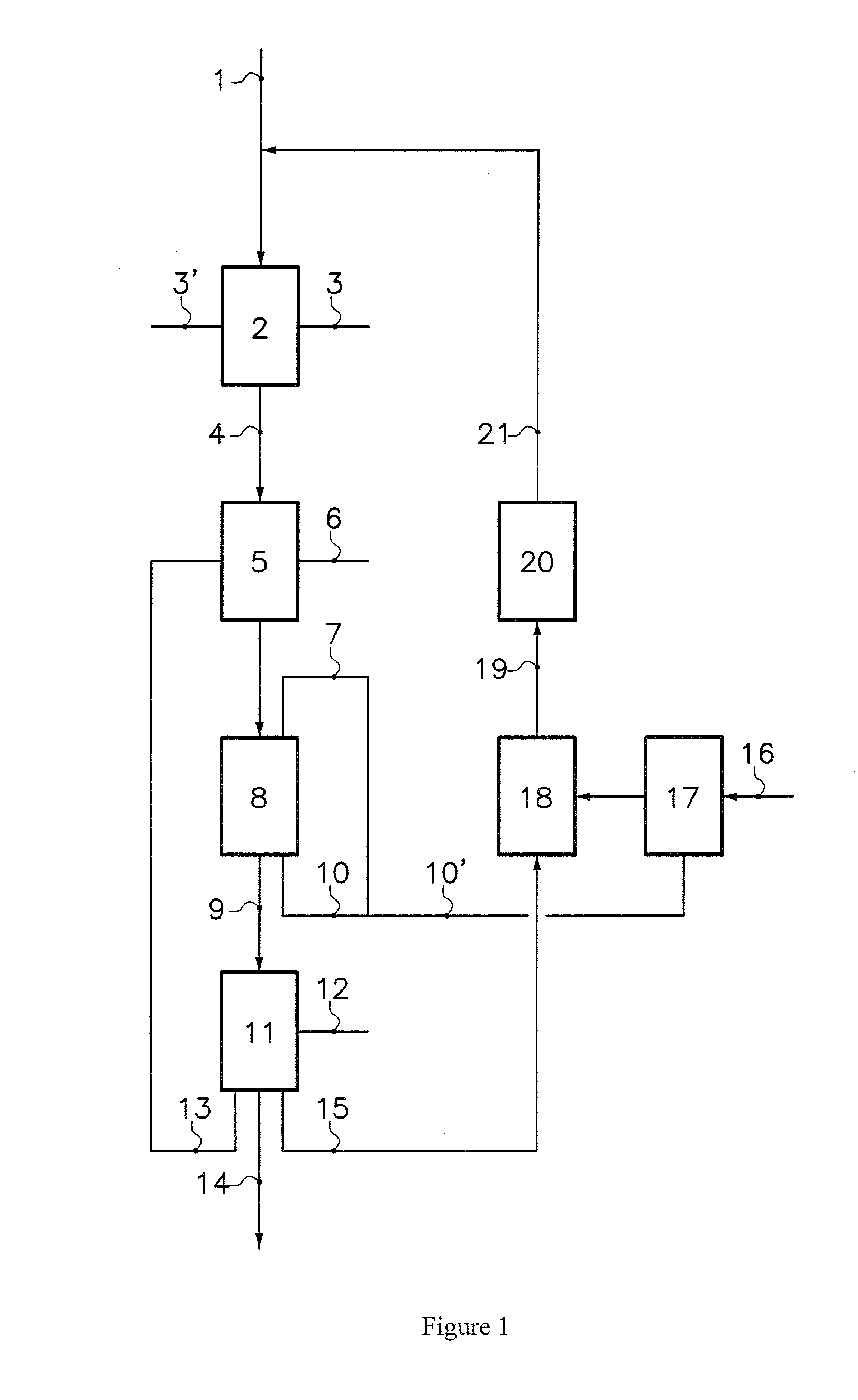Process for producing sodium bicarbonate for flue gas desulphurization
a technology of sodium bicarbonate and flue gas desulphurization, which is applied in the direction of lithium compounds, liquid/fluent solid measurements, peptides, etc., can solve the problems of large sulfur oxide volume, large sulfur residue amount, and harmful to the ecology
- Summary
- Abstract
- Description
- Claims
- Application Information
AI Technical Summary
Problems solved by technology
Method used
Image
Examples
example
[0026]1000 g of Na2SO4, resulting from the dry desulfurization of flue gases by means of sodium bicarbonate, is taken. This quantity of Na2SO4 is then dissolved in 2500 g of water. The resulting aqueous solution is introduced into the acid compartments (located between the cationic face of the bipolar membrane and the cationic membrane) of a two-compartment electrodialyzer. The basic compartments are fed with water. The bipolar membranes used are produced by ASTOM (Neosepta BP—1E model) and the cationic membranes are Nafion® 324 membranes, produced by DuPont. The temperature of the aqueous Na2SO4 solution is 40° C. 6.3 faradays are passed through the electrodialyzer (voltage of 1.4 V per cell, current density of 1 kA / m2). Recovered from the basic compartments is a solution comprising 250 g of sodium hydroxide and from the acid compartments a solution comprising 760 g of NaHSO4 in which 100 g of unconverted Na2SO4 remains. The current efficiency is 0.9. The solution containing 760 g ...
PUM
| Property | Measurement | Unit |
|---|---|---|
| particle diameter | aaaaa | aaaaa |
| particle diameter | aaaaa | aaaaa |
| particle diameter D50 | aaaaa | aaaaa |
Abstract
Description
Claims
Application Information
 Login to View More
Login to View More - R&D
- Intellectual Property
- Life Sciences
- Materials
- Tech Scout
- Unparalleled Data Quality
- Higher Quality Content
- 60% Fewer Hallucinations
Browse by: Latest US Patents, China's latest patents, Technical Efficacy Thesaurus, Application Domain, Technology Topic, Popular Technical Reports.
© 2025 PatSnap. All rights reserved.Legal|Privacy policy|Modern Slavery Act Transparency Statement|Sitemap|About US| Contact US: help@patsnap.com

